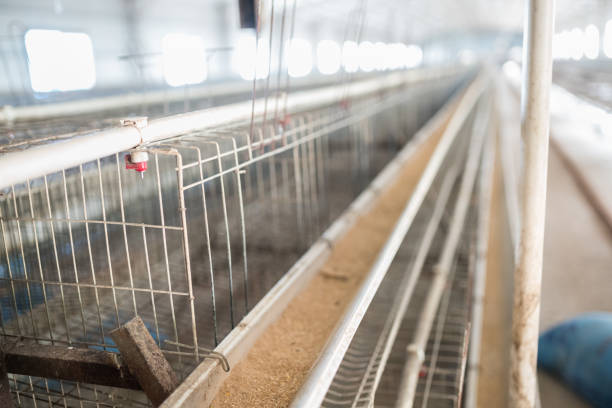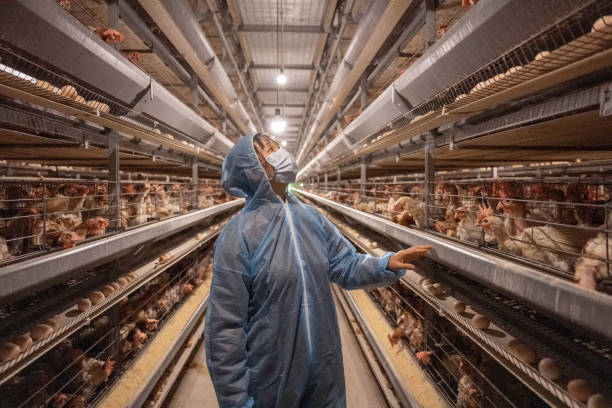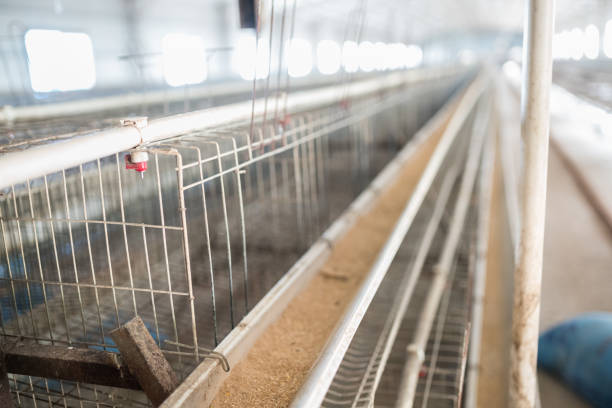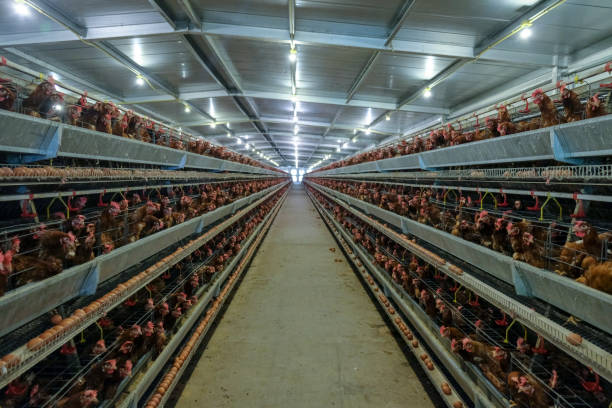Automatic Feeding Chicken Cage System for African Farms
Automatic Feeding Chicken Cage System for African Farms
For poultry farmers across Africa, one of the biggest challenges has always been improving efficiency while keeping labor and operational costs under control. In recent years, more and more farms have begun exploring modern farming technologies—and among them, the automatic feeding chicken cage system is gaining significant traction. This innovative solution is changing how poultry is raised in Africa, helping farmers boost productivity, reduce waste, and maintain healthier flocks—all with less daily labor.
At Livi Machinery, we’ve worked closely with farmers across East, West, and Southern Africa to design and deliver customized automatic feeding systems that are not only built to last but also suited to local farming conditions. Whether you’re running a small commercial farm or managing a large-scale operation, an automated feeding setup can transform your business. Let’s dive into why this system is such a game-changer and how it’s specifically benefiting African poultry producers.
Why Automation Makes Sense for African Poultry Farms
Africa’s poultry industry is growing fast—fueled by rising population, urbanization, and increasing demand for affordable protein. But traditional hand-feeding methods simply can’t keep up. Feeding hundreds or thousands of birds twice or three times a day takes hours, requires consistent labor, and often leads to uneven feed distribution. Overfeeding wastes money; underfeeding hurts growth and egg production.
That’s where automation comes in. An automatic feeding chicken cage system uses a network of conveyors, tubes, or chains to deliver precise amounts of feed directly to each cage at scheduled times. It’s like setting a timer for meals—your chickens get fed on time, every time, without anyone needing to be there.
But beyond saving labor, these systems help optimize feed conversion ratios (FCR), which directly impacts profitability. Because each bird gets the right amount of balanced nutrition, you see faster weight gain in meat birds, more consistent egg laying in layers, and reduced stress in chicks. Plus, since feed is delivered through covered channels, there’s less spillage and fewer chances for rodents or wild birds to contaminate it.
In many African countries—like Nigeria, Kenya, Ethiopia, and Ghana—we’ve seen farms cut their labor costs by 40% or more after switching to automatic feeding. That means one worker can now manage what used to take three or four people. For rural farms where skilled workers are hard to find, this makes all the difference.
Key Components and How the System Works
So how does an automatic feeding chicken cage system actually work? Let’s break it down in simple terms.
The heart of the system is usually a central silo or storage bin where feed is loaded. From there, a mechanical delivery mechanism—typically chain-driven or auger-based—transports the feed along the length of the poultry house. The feed runs through troughs positioned in front of each row of cages, ensuring every level receives an even supply.
Timers or digital controllers determine when and how much feed is released. Many modern systems come with adjustable settings so you can customize feeding schedules based on bird age, breed, or season. For example, pullets may need smaller, more frequent meals early on, while mature layers benefit from one large feeding in the morning and another in the late afternoon.
We’ve designed our systems with African conditions in mind. Dust, heat, humidity, and power fluctuations are common issues, so our equipment uses corrosion-resistant materials, sealed motors, and optional solar-powered backup controls. The cages themselves are made from hot-dipped galvanized steel, meaning they can handle high moisture environments without rusting quickly.
Another major advantage: scalability. You don’t need to build a whole new facility to adopt automation. Our modular designs allow farmers to start with one house and expand later. We’ve helped clients grow from 5,000-bird operations to over 100,000 birds using phased installations—all integrated under the same feeding control system.
And because everything is connected, farmers can monitor performance remotely. Some advanced setups even include sensors that notify you if a blockage occurs or if feed levels run low. No more walking long barns in the heat just to check if birds have food.
Real Benefits Farmers Are Seeing Across Africa
When we install a new automatic feeding system, we follow up with our customers to see how it’s performing. The feedback we hear again and again is this: “It’s changed the way we farm.”
Take Samuel in Nakuru, Kenya. He upgraded his layer farm from manual feeding to an automatic belt-fed cage system last year. Within six months, he noticed fewer broken eggs, better egg size consistency, and a 15% drop in feed waste. “Before, I had to wake up at 5 a.m. every day to mix and carry feed,” he said. “Now, the system does it. My staff focuses on health checks and cleaning instead.”
Then there’s Fatima’s broiler farm near Abuja, Nigeria. She was struggling with uneven growth rates until she installed a staggered feeding schedule using automated controls. By adjusting portions based on weekly weight gains, her flock reached market weight two days earlier than before—saving both feed and energy costs.
Veterinarians and animal welfare experts also appreciate these systems because they promote more consistent access to food. No more dominant birds pushing others away during feeding time. Every chicken gets its share, reducing stress and improving overall health.
Let’s not forget biosecurity. With less human traffic inside poultry houses, the risk of introducing disease drops significantly. Automated systems mean fewer boots on the ground, fewer entry points for pathogens like Newcastle disease or avian flu—which are real threats across parts of Africa.
From Tanzania to South Africa, we’re seeing governments and development programs encouraging investment in modern farming tech. Some offer partial subsidies or financing options for equipment like ours. We work closely with local partners to help farmers access these opportunities and make smart upgrades without breaking the bank.
Getting Started with Your Own Automatic Feeding System
If you’re considering upgrading to an automatic feeding chicken cage system, the best place to start is with a clear assessment of your current setup. Ask yourself: How many birds do you currently raise? What are your main pain points—labor, feed waste, inconsistent results? And how do you plan to grow over the next 3–5 years?

At Livi Machinery, we don’t believe in one-size-fits-all solutions. That’s why we offer free farm consultations—virtual or on-site—to evaluate your needs and recommend the right configuration. We’ll help you choose between chain, belt, or auger feeding mechanisms, select the appropriate cage design (layer, breeder, broiler, or nursery), and even assist with house layout and ventilation planning.

Once you decide to move forward, we handle manufacturing, shipping, and installation. All our systems are pre-tested before shipment, and we provide training in English, French, Swahili, or Hausa depending on your location. And yes—we support spare parts and maintenance guidance long after delivery.
Now is the perfect time to explore automation. As competition increases and consumers demand better quality, efficient farms will stay ahead. Don’t let outdated methods limit your potential.
👉 Want to see how an automatic feeding chicken cage system could work on your farm? Send us a message today with your flock size and location, and we’ll send you a free customized proposal—including pricing and setup options tailored to African farming conditions.





